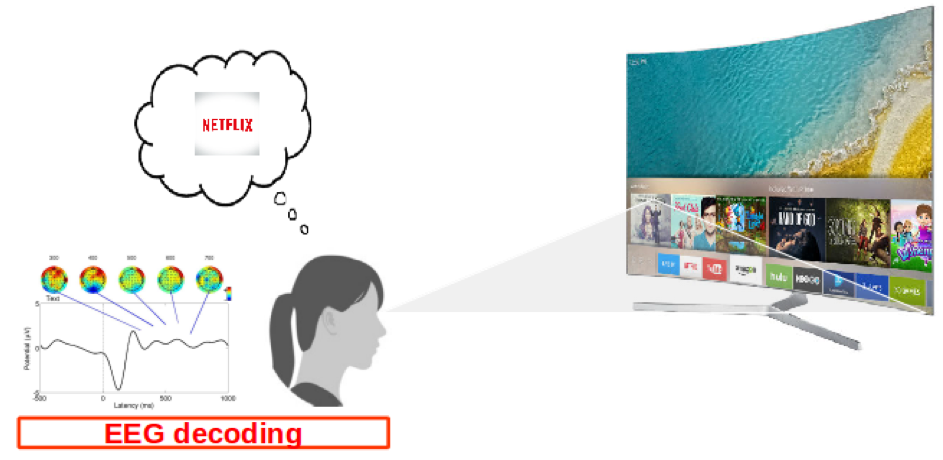Brain-controlled smartTV
A brain-machine interface (BMI), records neural signals and translates them into actions. Thus, a BMI has to distinguish patterns of brain activity that carry the user’s intention. Neural signals for a BMI can be recorded invasively (electrodes implanted in the brain) or non-invasively (electrodes in contact with the subject’s scalp), each modality exhibiting complementary advantages and disadvantages. Still, only non-invasive techniques like electroencephalogram (EEG) allow to make BMI a practical device for a large population.

EPFL, through the Defitech Chair in Brain-Machine Interface, has demonstrated how people with motor disabilities can control a variety of devices by directly modulating their brain waves, mainly EEG, in order to convey their desired command. Some exemplary applications are brain-controlled motorized wheelchairs and telepresence robots for mobility substitution, and virtual keyboards for communication.
This project aims at continuing these efforts to develop and produce a prototype that allows consumers to control a Samsung Smart TV by brain activity and gaze.
This project was funded by Samsung Electronics Switzerland.
